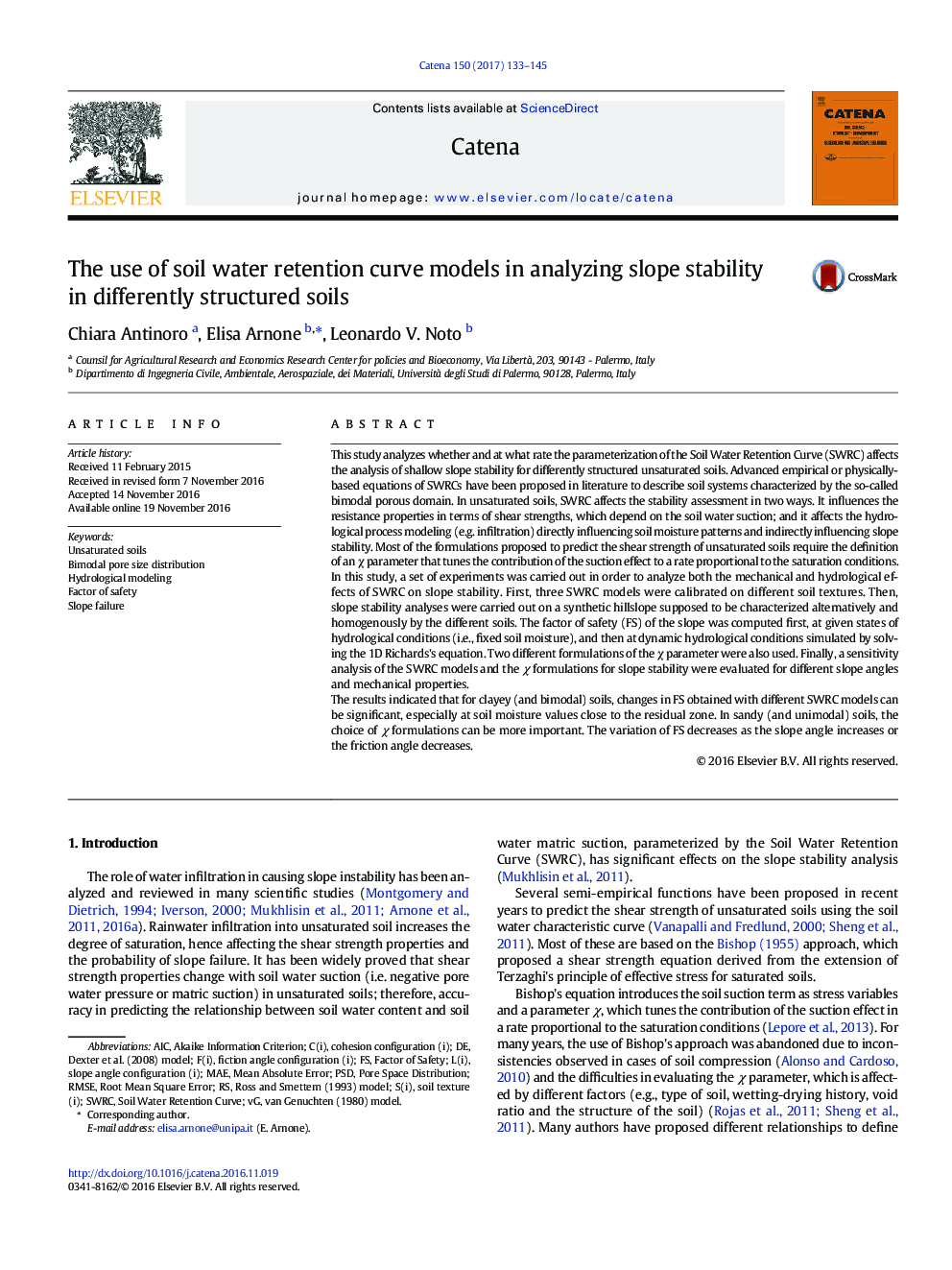| کد مقاله | کد نشریه | سال انتشار | مقاله انگلیسی | نسخه تمام متن |
|---|---|---|---|---|
| 6407649 | 1629204 | 2017 | 13 صفحه PDF | دانلود رایگان |
- Soil-Water-Retention-Curve influence on stability analysis is assessed.
- Unimodal and bimodal structured soils are taken into account.
- Clayey and bimodal soils are sensitive to the SWRC models.
- In sandy and unimodal soils, the choice of Ï formulation is more important.
- The effects of SWRC and Ï are significant within the soil moisture residual zone.
This study analyzes whether and at what rate the parameterization of the Soil Water Retention Curve (SWRC) affects the analysis of shallow slope stability for differently structured unsaturated soils. Advanced empirical or physically-based equations of SWRCs have been proposed in literature to describe soil systems characterized by the so-called bimodal porous domain. In unsaturated soils, SWRC affects the stability assessment in two ways. It influences the resistance properties in terms of shear strengths, which depend on the soil water suction; and it affects the hydrological process modeling (e.g. infiltration) directly influencing soil moisture patterns and indirectly influencing slope stability. Most of the formulations proposed to predict the shear strength of unsaturated soils require the definition of an Ï parameter that tunes the contribution of the suction effect to a rate proportional to the saturation conditions.In this study, a set of experiments was carried out in order to analyze both the mechanical and hydrological effects of SWRC on slope stability. First, three SWRC models were calibrated on different soil textures. Then, slope stability analyses were carried out on a synthetic hillslope supposed to be characterized alternatively and homogenously by the different soils. The factor of safety (FS) of the slope was computed first, at given states of hydrological conditions (i.e., fixed soil moisture), and then at dynamic hydrological conditions simulated by solving the 1D Richards's equation. Two different formulations of the Ï parameter were also used. Finally, a sensitivity analysis of the SWRC models and the Ï formulations for slope stability were evaluated for different slope angles and mechanical properties.The results indicated that for clayey (and bimodal) soils, changes in FS obtained with different SWRC models can be significant, especially at soil moisture values close to the residual zone. In sandy (and unimodal) soils, the choice of Ï formulations can be more important. The variation of FS decreases as the slope angle increases or the friction angle decreases.
Journal: CATENA - Volume 150, March 2017, Pages 133-145
